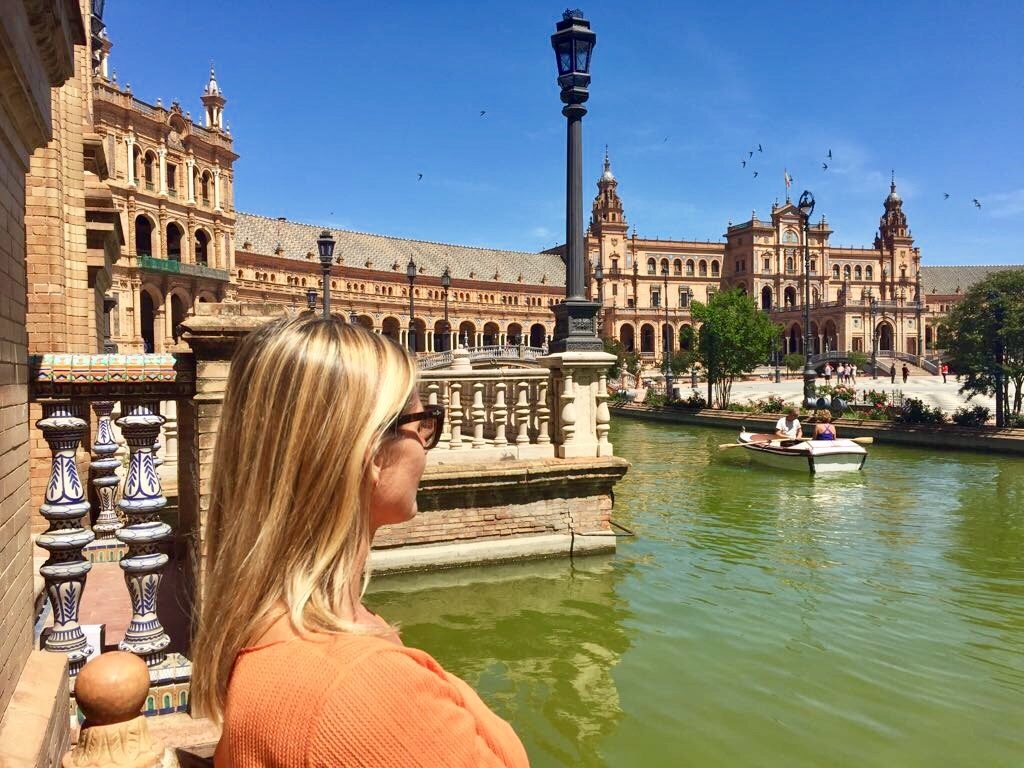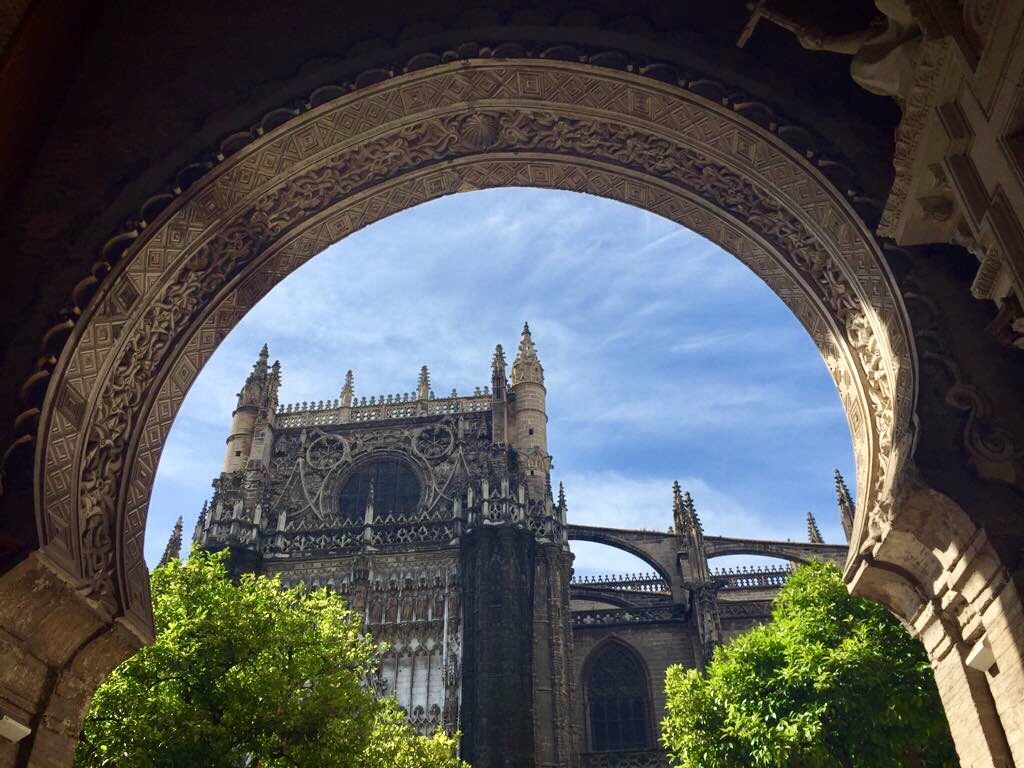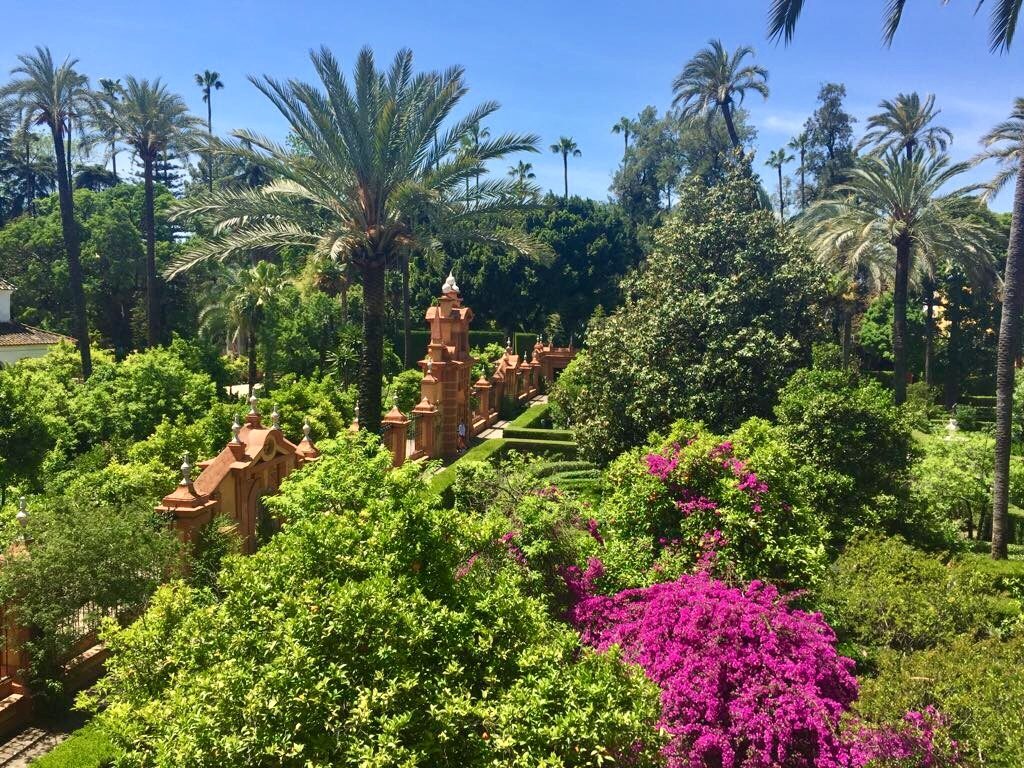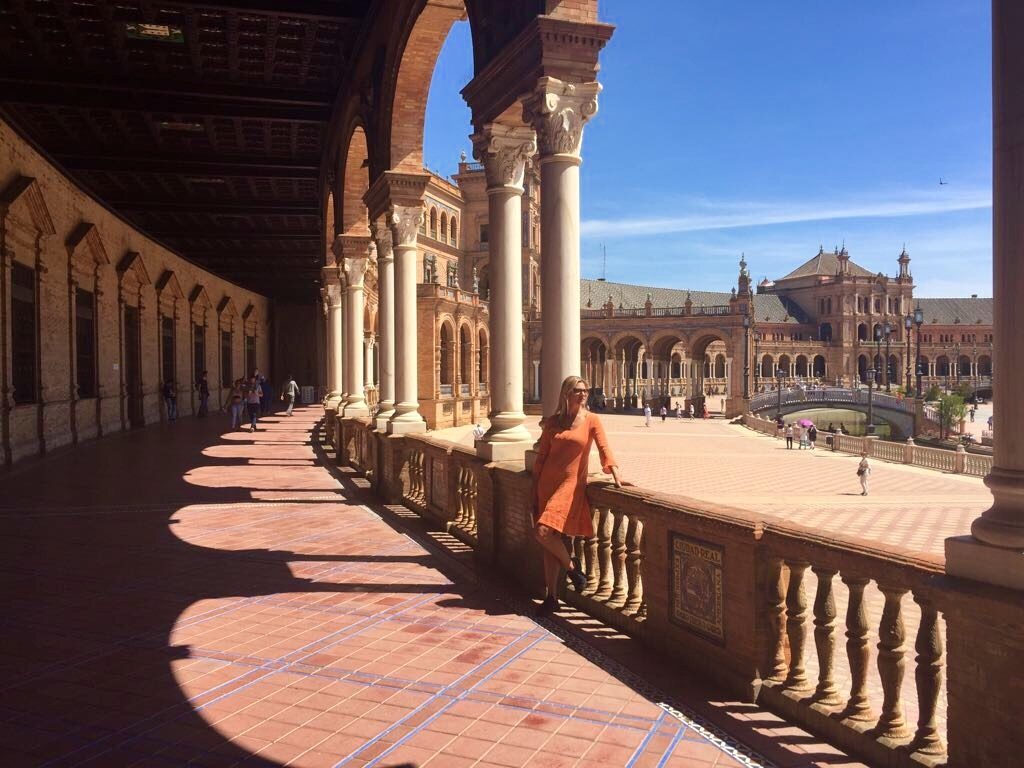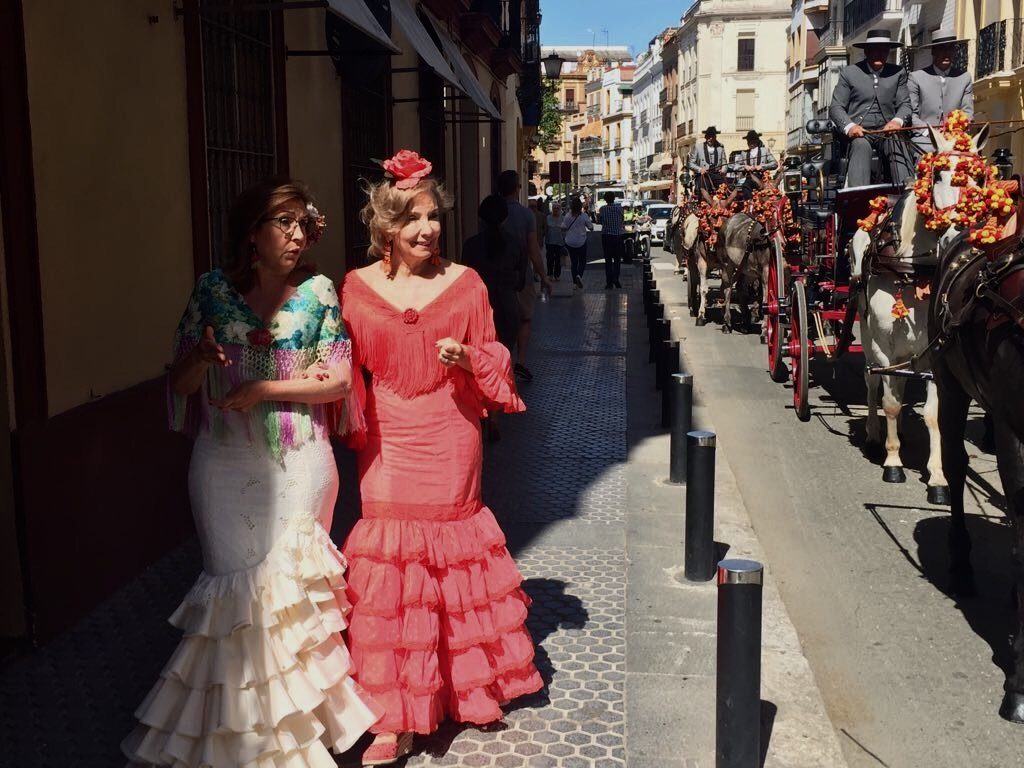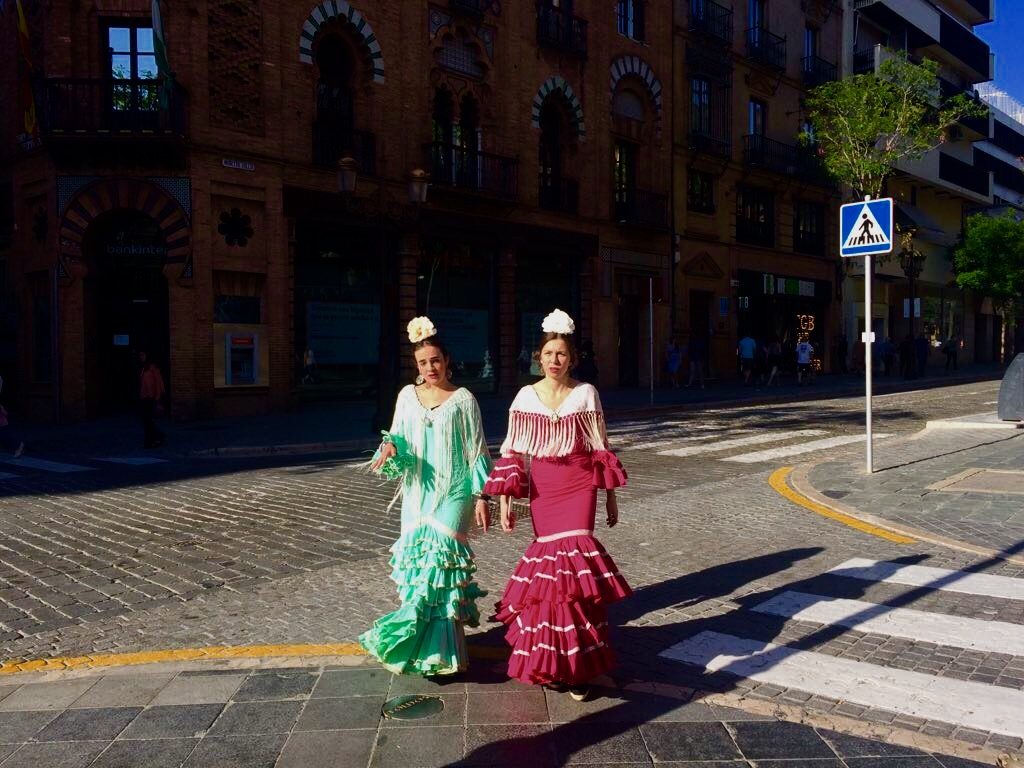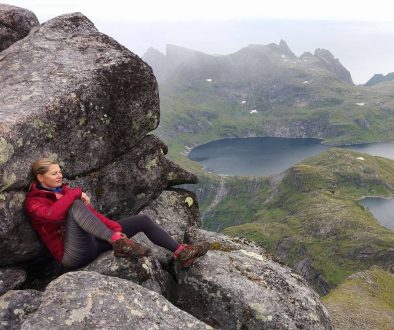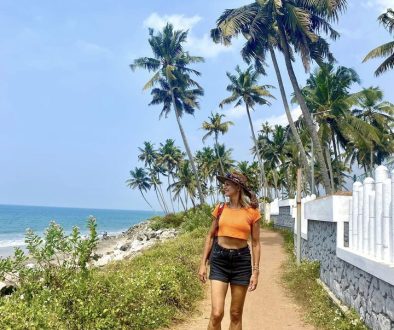Sewilla na weekend
Moja ciepłolubna natura znów zapragnęła słońca, więc opuszczam zimne polskie wybrzeże, by znaleźć się w Sewilli, królestwie flamenco i corridy, gdzie wielowiekowa kultura hiszpańska miesza się z arabską. Mimo, że to dziś wielka metropolia, ma swój niepowtarzalny styl i urok, zaś w okazałych placach i kościołach widać bogate dzieje historii.
Już sam fakt, że mieszkam w XVIII wiecznej zakrystii, przerobionej na mały hotelik wzbudza niezwykłe emocje. Na wieczorny spacer wybieram dzielnicę Macarena, gdzie w staroświeckich barach próbuję tapas, a w wąskich uliczkach z suszącym się praniem, wczuwam się w lokalny klimat. Kobiety spacerują w długich, opiętych sukniach z falbanami, mają wpięte we włosy kwiaty i wydają się być gotowe do tańca. Mężczyźni nawet ci młodzi, ubrani w garnitury i wypolerowane buty, towarzyszą swoim kobietom i choć u nas uznano by to raczej za strój karnawałowy, w krainie flamenco to oczywisty wizerunek.
Następnego dnia idę zobaczyć najważniejsze budowle Sewilli, z których większość znajduję się w Santa Cruz, średniowiecznej dzielnicy żydowskiej. Pomimo, że Sewilla to rozległe miasto, świetnie się je zwiedza na piechotę. Trzeba co prawda manewrować między dorożkami i rowerzystami, ale to zdecydowanie najlepsza forma zwiedzania.
Kiedy już dotarłam zmęczona do hotelu i padłam na łóżko, uświadomiłam sobie brak telefonu! Kontakt ze światem do jedno, ale to także mój aparat bez którego jak bez ręki. Na szczęście miła para Francuzów znalazła telefon i czeka na placu przy fontannie. Pomimo upału, biegnę przez miasto po zgubę. Codzienne treningu przydają się w tej chwili jak nigdy. Francuskie małżeństwo cierpliwie czeka i oddaje mi znaleziony wcześniej telefon. Kilka godzin później spotykamy się w tym samym tapas, żeby stwierdzić, że jesteśmy rezydentami tego samego hotelu!
Co zobaczyć w Sewilli? Oto obowiązkowa lista:
Gotycka Katedra, w średniowieczu największa w Europie, z nagrobnym pomnikiem Krzysztofa Kolumba i wieloma cennymi dziełami sztuki, zrobi na każdym wrażenie. Zbudowana została na miejscu meczetu, rozbudowana w czasie wielkich wypraw, do dziś pyszni się złotem przywiezionym z Nowego Świata, które przyozdabia główne prezbiterium.
La Giralda, wieża (minaret) niegdyś należąca do meczetu, po dobudowaniu chrześcijańskich motywów, zespolona z katedrą. Można wejść na szczyt, by nacieszyć oczy widokiem na miasto.
Real Alcazar, pałac królewski, stanowiący absolutne arcydzieło sztuki mudejar. Stiukowe ornamenty, azulejos, rzeźbione sufity, piękne patios, a do tego rozległe ogrody…
Archivo de Indias, budynek, w którym przechowywane są dokumenty i listy z okresu kolonizacji i eksploatacji Nowego Świata. Znajdziemy tu m.in listy Kolumba, Cortesa, Cervantesa, Jerzego Waszyngtona, a także mapy z czasów odkrywania kontynentów.
Plaza de Espana, ogromny plac, otoczony wspaniałą kolumnadą, ze zdobionymi pawilonami. Ulubione wypoczynku mieszkańców od zgiełku miasta.
***
My warm-blooded nature once again desired sun, so I leave the cold Polish coast for Seville, the kingdom of flamenco and corrida, where centuries-old Spanish culture mixes up with Arabic. Although it is a great metropolis today, it has its own unique style and charm and in the squares and churches you can see the rich history of this place.
The fact that I live in the eighteenth-century sacristy which has been transformed into a small hotel makes it so much more inspiring. For an evening walk I choose the Macarena district, where in the old-fashioned bars I try tapas, and in the narrow streets with drying laundry, I inhale the local atmosphere. Women walk in long, fluffy dresses with furbelows, have flowers in their hair and seem to be ready to dance. Men, even young ones, dressed in suits and polished shoes, accompany their women, and although we would rather consider it as carnival costumes, for flamenco it’s a natural image.
Next day I go to see the most important buildings of Seville, most of which are located in Santa Cruz, Medieval Jewish district. Although Seville is a large city, it is a great place to visit on foot. You have to maneuver between cabs and bikers, but it’s definitely the best way for sightseeing.
When I finally got to the hotel and tired fell on my bed, I realized I had no phone! Contact with the world is one thing, but after all it’s also my camera with lots of photos! Fortunately, a nice pair of Frenchmen found the phone and waited in the square by the fountain. Despite the heat, I run through the city. Daily trainings appeared to be more useful than ever. The French couple patiently waits and return my phone which they have found earlier. A few hours later we meet at the same tapas place to say we are resident of the same hotel!
What to see in Seville? Here is a mandatory list:
Gothic Cathedral, in the Middle Ages the largest in Europe, with the grave monument of Christopher Columbus and many valuable works of art, will make everyone impressed. Built on the site of a mosque, expanded during the great expeditions, to this day stays proud with gold brought from the New World, which adorns the main chancel.
La Giralda, the tower which once belonged to the mosque, after the addition of Christian motifs, combined with the cathedral. You can climb to the top to enjoy the city’s view.
Real Alcazar, royal palace, an absolute masterpiece of mudejar art. Stucco ornaments, azulejos, carved ceilings, beautiful patios, and extensive gardens …
Archivo de Indias, a building in which documents and letters from the colonization and exploitation of the New World are kept. You will find here, letters of Columbus, Cortes, Cervantes, George Washington, and the first maps of exploration of the continents.
Plaza de Espana, a huge square, surrounded by a magnificent colonnade, with decorated pavilions. Residents favorite place of rest from the hustle and bustle of the city.
– Kasia


